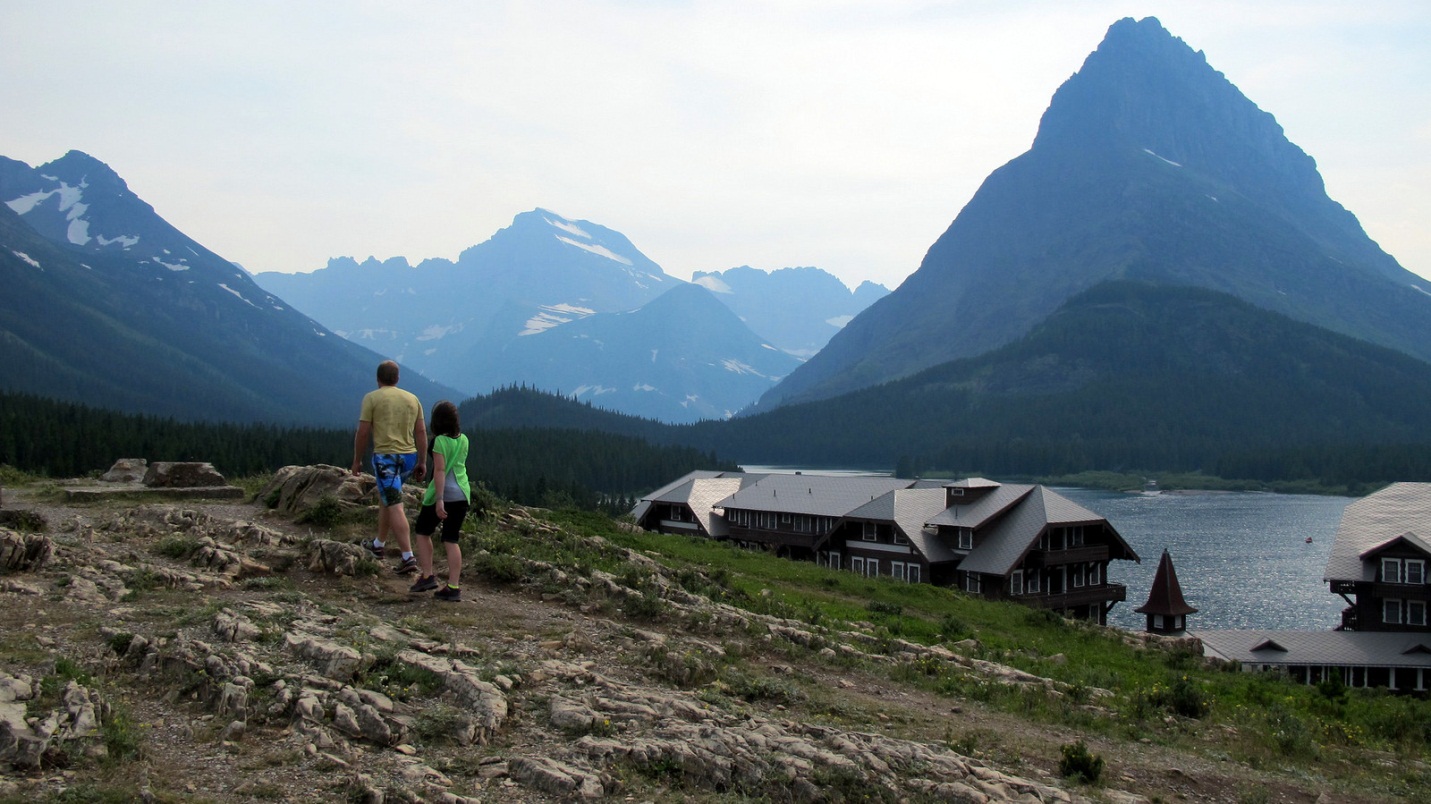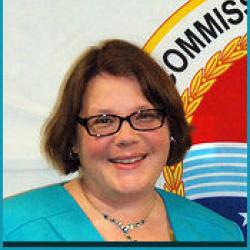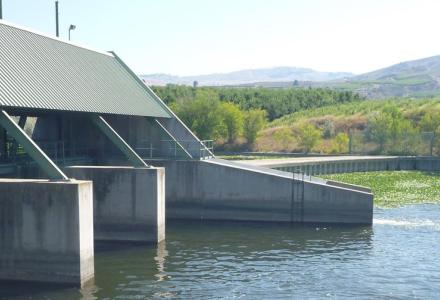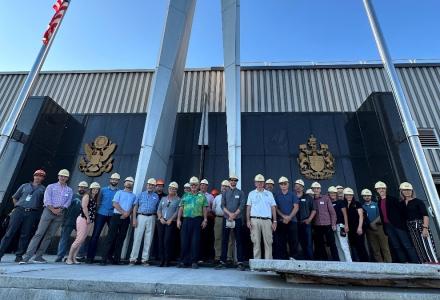
The Boundary Waters Treaty of 1909 stretches from sea to shining sea but specifically mentions only two watersheds by name: Niagara Falls, and the Milk and St. Mary rivers. The Milk and St. Mary watershed has long been a source of water tension in North America. In July, Commissioners returned to the Milk and St. Mary watershed to meet with local experts and gain first-hand understanding of the challenges and opportunities of this unique glacial-fed, prairie river system.
Glacier-Waterton International Peace Park is the headwaters for this watershed. Glacier’s Going-to-the-Sun Road represents the beauty, innovation, commitment, vision and wonder of the Crown of the Continent—the backbone of North America. It is also one of the best places to witness glacial retreat. Glacier National Park’s glaciers, which numbered more than 150 in 1825, now stand at about 25. The remaining glaciers are expected to melt in the next 10-15 years, according to research by the U.S. Geological Survey.
Snow pack and ice fields will remain, but the slow, predictable flow of fresh glacial water from mountains, throughout the growing season, will disappear.
 Taken at Waterton Lakes National Park, during a visit by IJC commissioners and staff.
Taken at Waterton Lakes National Park, during a visit by IJC commissioners and staff.
On the prairies, water is scarce and valuable. The Milk and the St. Mary are two separate rivers that both flow across the international boundary. The St. Mary River is shorter and begins in Glacier National Park in Montana, flowing through Alberta. The Milk River is much longer and more typical of a flashy prairie river system that torrents in the spring, then trickles, and even dries up, in the summer.
In the early 1900s, the more dependable flow of the St. Mary River was diverted in Montana, through a canal and two large steel pipes, almost one mile long, to traverse the landscape and provide more predictable base flow for farms and communities along the Milk River.
This move by the United States was met with frustration by Canadian interests, which initiated building “Spite Ditch” to return the flow that had been diverted. The ditch was never completed, as the issue received national attention and the principle of equal sharing and apportionment of this watershed was specifically included in the Boundary Waters Treaty of 1909.
After a series of temporary orders, the IJC adopted an order in 1921 that guides apportionment today. Apportioning the flow between the U.S. and Canada requires accurate understandings of flow and use. There are 66 gauging stations along the St. Mary and Milk rivers, which provide the data needed to divide the flow based on the principle in the 1921 order.
Unlike IJC’s other boards along the boundary, the Milk and St. Mary rivers have Accredited Officers, charged with the accounting of the water resources and apportionment.
Over the years, field representatives and other experts have been brought into the room to inform discussions. The Accredited Officers and field representatives asked the IJC to recognize the ongoing involvement of experts around the table and expressed interest in increasing involvement in the International Watersheds Initiative. The IJC will continue conversations with the Accredited Officers, field representatives, State and Provincial officials, and local citizens within the watershed. Discussions will continue at the IJC’s fall semi-annual meeting in Ottawa, Ontario.
 Taken at Glacier National Park during a visit by IJC commissioners and staff.
Taken at Glacier National Park during a visit by IJC commissioners and staff.
Innovative and collaborative water management is a way of life on the prairies. With climate change accelerating glacial melt, and more intense droughts and storms, community water leaders need to be informed and prepared to deal with these challenges.
Experts on both sides of the border, under the leadership of the Accredited Officers, have submitted project requests to build capacity to make better use of the available water in the Milk and St. Mary rivers. Such projects are steps toward meeting the needs of this sensitive watershed that demands more systematic and robust support. The challenges of glacial retreat, increasing demand for water, and predicted decline of water availability raise important questions of equitable sharing, stewardship and sustainability as the Milk and St. Mary rivers head into a second century of international partnership.

Dereth Glance served as an IJC US Commissioner from July 2011 to September 2016.



